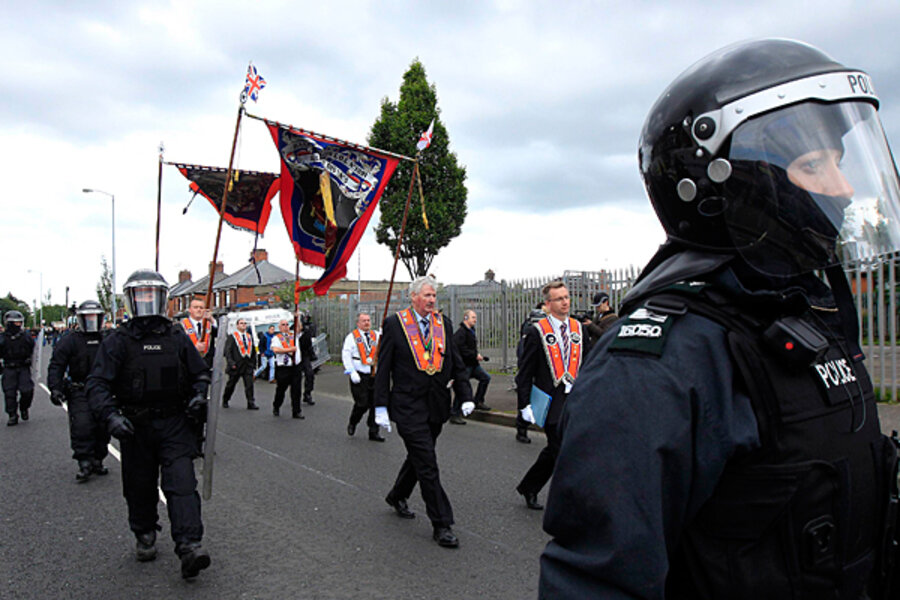Rioting 'anarchy' in Belfast after token Orange parade
Loading...
| Belfast, Northern Ireland
Gunshots were fired at police in scenes of "anarchy" in Belfast early on Friday morning after Catholic youths rioted in response to a small Protestant parade passing their estate the previous day, but no officers were hit.
The overnight violence was the culmination of a series of parades that pro-British Protestants stage annually in the British-ruled province, a tradition seen as provocative by Irish nationalists who want to be part of a united Ireland.
Dozens of youths threw bricks, snooker balls, and petrol bombs at hundreds of riot police at the point where Catholic and Protestant areas of the city meet. Police responded with water cannon and plastic bullets.
At least 10 gunshots were fired at police lines, but no police officers were injured, a police spokeswoman said.
"Anarchy took place last night which provided cover for the more sinister elements to come out and engage in attempted murder," Matt Baggott, Chief Constable of the Police Service of Northern Ireland told a news conference.
"Those responsible for rioting, wherever they came from, will be subject to a prolonged police investigation and be brought before the courts. There is no excuse for rioting and violence."
Over 20 officers were injured during the overall rioting which saw a burning car pushed towards a line of riot police. Six men were charged with public order offenses and children as young as 15 were arrested.
Protestant Parades
Since a peace agreement was signed in 1998, violence between the province's Catholics and Protestants – which has raged on and off for three decades – has largely ended. However, much of Belfast remains divided along religious lines.
The latest flare-up began shortly after a parade of 15 members of the Protestant Orange Order walked in silence past a row of shops in the nationalist Ardoyne area, flanked by riot police.
The parade was smaller than usual because the authorities insisted marchers pass the shops before 4 p.m., too early for most of those attending a mass rally at the edge of the city.
Most of the 500 or so Orange Order parades across the province, involving hundreds of thousands of marchers, bandsmen, and watching crowds, passed off peacefully.
However, Catholic youths also rioted and threw petrol bombs at police in Londonderry after local Orange Order parades there. A double-decker bus was hijacked and set on fire in Craigavon, police said.
Fighting between mostly Protestant loyalists who want Northern Ireland to remain part of the United Kingdom and Irish nationalists, mainly Catholics, who want it to be part of a united Ireland, tore the province apart during a three-decade period known as the "Troubles."
A 1998 peace agreement paved the way for a power-sharing government of loyalists and nationalists. Violence has subsided, but police say the threat from dissident groups opposed to the peace deal is higher than at any time since it was signed.
The marchers were marking King William of Orange's victory over the Roman Catholic King James at the Battle of the Boyne in 1690, which helped to secure Protestant supremacy in Ireland.








